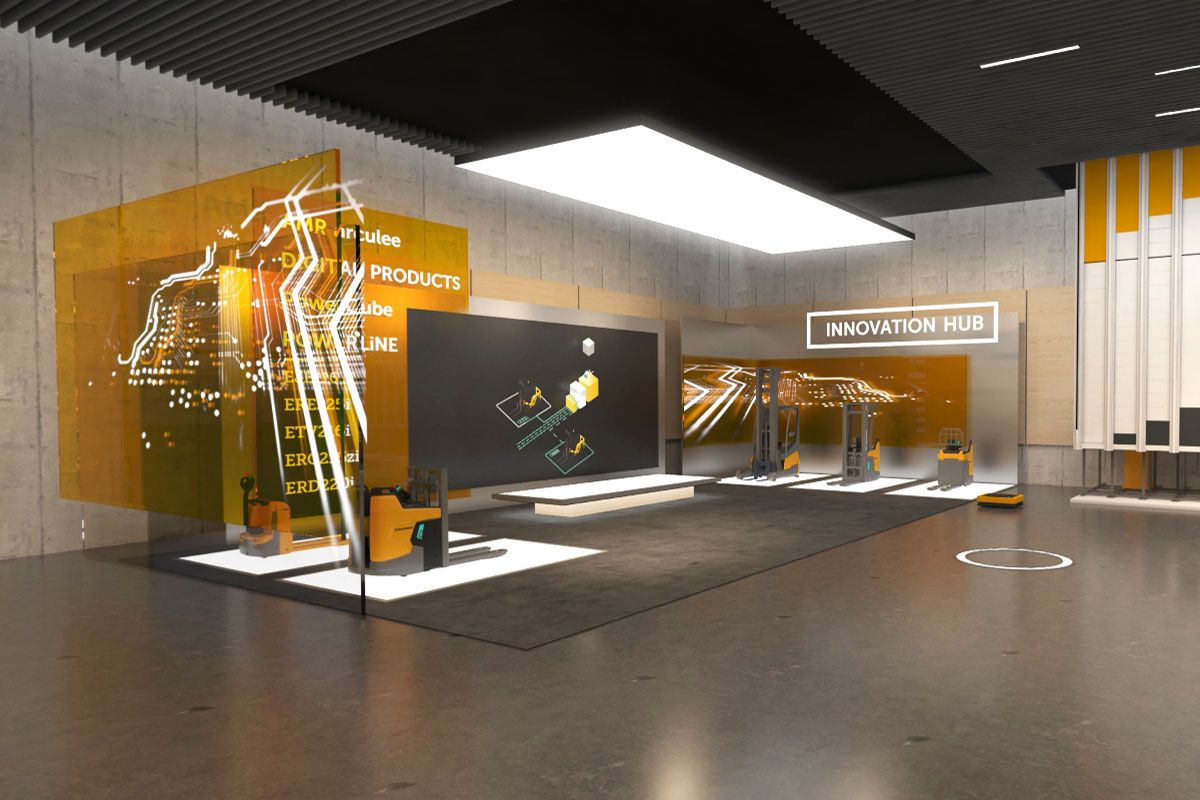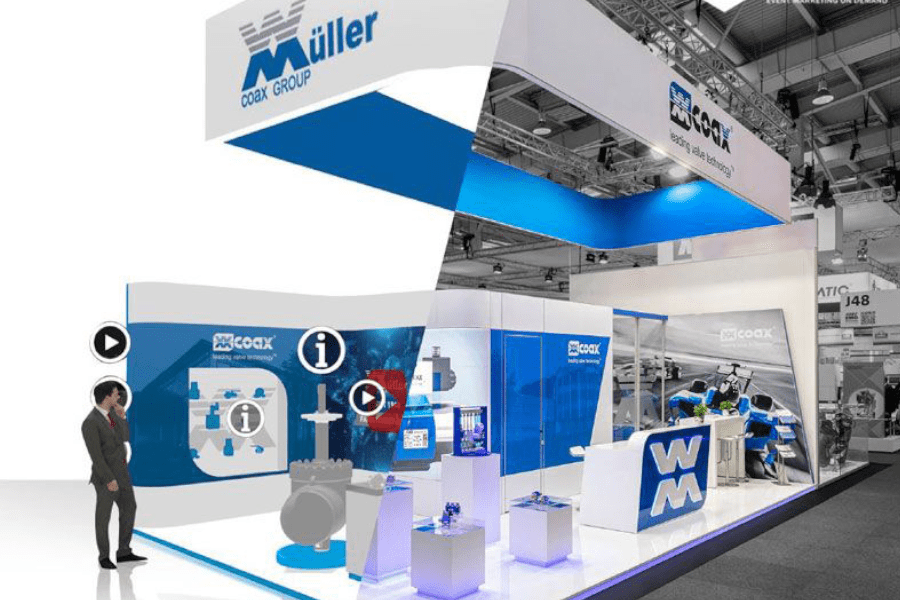Trade fair trends 2025: Emotional, digital and sustainable
In recent years, trade fairs have evolved from mere platforms for product presentations to important touchpoints for brand-building experiences....
3 min read
 Carina Gottschalk
:
Friday, 21. June 2024
Carina Gottschalk
:
Friday, 21. June 2024

Presenting a product at a trade fair is often a challenge, especially if the product is difficult to transport. In such cases, companies often rely on monitors, graphics and brochures to convey information, while stand personnel take over the detailed presentation. However, this approach brings with it the difficulty of convincingly presenting the special features of the product so that the visitor develops a precise understanding and is ideally won over.
Digital solutions can be used to relieve stand personnel and make product presentations more effective. This is not just about videos, which visitors may only see excerpts of, but also about the many possibilities offered by advancing digitalisation. Interactive presentations, 3D models and virtual reality applications can be used to convey a comprehensive and memorable impression of the product that impresses and convinces visitors in the long term.
.png?width=940&height=494&name=Titelbild%20(17).png)
Most of these points can be covered by an experienced salesperson, but the possibilities beyond videos are limited, especially in the demonstration. However, these points should not be neglected in order to inspire stand visitors. This is exactly where the virtual world offers fantastic options to support precisely this.
In order to make a product ‘tangible’ at the trade fair, it is possible to create a controllable simulation. This explains processes and functions like a video, but can be controlled interactively by visitors or staff. What is developed to perfection in some games can also be implemented in a simplified and product-orientated way. For example, a well-known simulation game series attempts to convey a perfect image of various vehicles and trades. Of course, this is not necessarily an option at trade fairs, as visitors do not have unlimited time and patience. What is possible, however, are simplified simulation games that convey the USPs of a product. The interactive part helps visitors to remember the product much better than simply reading the information.
Such a demonstration offers considerable advantages, especially for process-controlled or process-controlling products. These simulations also act as eye-catchers, as they have a high graphic potential and therefore effectively attract the attention of trade fair visitors.
Virtual reality (VR) is now a well-established concept and is frequently used at trade fairs. By using 3D glasses, it is possible to bring people into other rooms and thus advertise products that could not be taken to the trade fair due to their size or immobility. Immersing yourself in a 3D world - whether panoramic photography or a 3D replica - is always an impressive experience for the visitor. As the digital world does not bind us to physical rules, more creative integration is also possible. For example, a machine can be shown from the inside or the customer can be taken to places that are difficult to access, which would hardly be possible outside the trade fair.
The use of augmented reality is also becoming increasingly relevant. This has several advantages compared to the classic use of VR worlds. You don't necessarily need 3D glasses for this, but can use smartphones and tablets. As almost every visitor to the stand uses a smartphone, the virtual world can even be taken home with them - for example via a QR code. When using this ‘augmented’ reality, it is possible to position and present products in the room as desired. The presentation can thus be incorporated into the stand design, making it stand out from the competition. AR technology allows customers to visualise products in their real environment. This is particularly useful for furniture, decorative items or clothing, as customers can see how the product looks in their own space or on their body. Interactive games or tasks for competitions can also be integrated. The stand personnel can provide excellent support with tablets and a conversation starter is automatically provided.
A digital lookbook is a kind of online catalogue that presents various products in style. This is particularly popular in the fashion industry and makes it possible to show products in different combinations and contexts. Why not allow visitors to your stand to put together how they would put something together themselves? Interior designers are familiar from furniture stores, but this technique is suitable for many more companies and product groups. The fun of trying things out and combining them creates a positive experience in connection with the company.
However, self-assembly is also popular in other sectors, such as the automotive industry and many others. Here, it is often not the later realisability that is important, but the feeling of unlimited possibilities.

With the decreasing attention span and high competitive pressure, the presentation of the product must be convincing. The more inspiring the presentation, the longer it will be remembered and lead to an increased perception of the company. We can and should give our stand personnel the options to use technology in a targeted way to attract customers. The constantly advancing development of technology enables us to use more complex means than videos and graphics to organise trade fair presentations more efficiently.

In recent years, trade fairs have evolved from mere platforms for product presentations to important touchpoints for brand-building experiences....

Virtual trade fair stands are becoming increasingly important for companies. While the topic was initially viewed with skepticism and assumed to be a...

Every trade fair exhibitor wants to attract as many visitors as possible to their stand. Make contact and communicate with them. To present their...